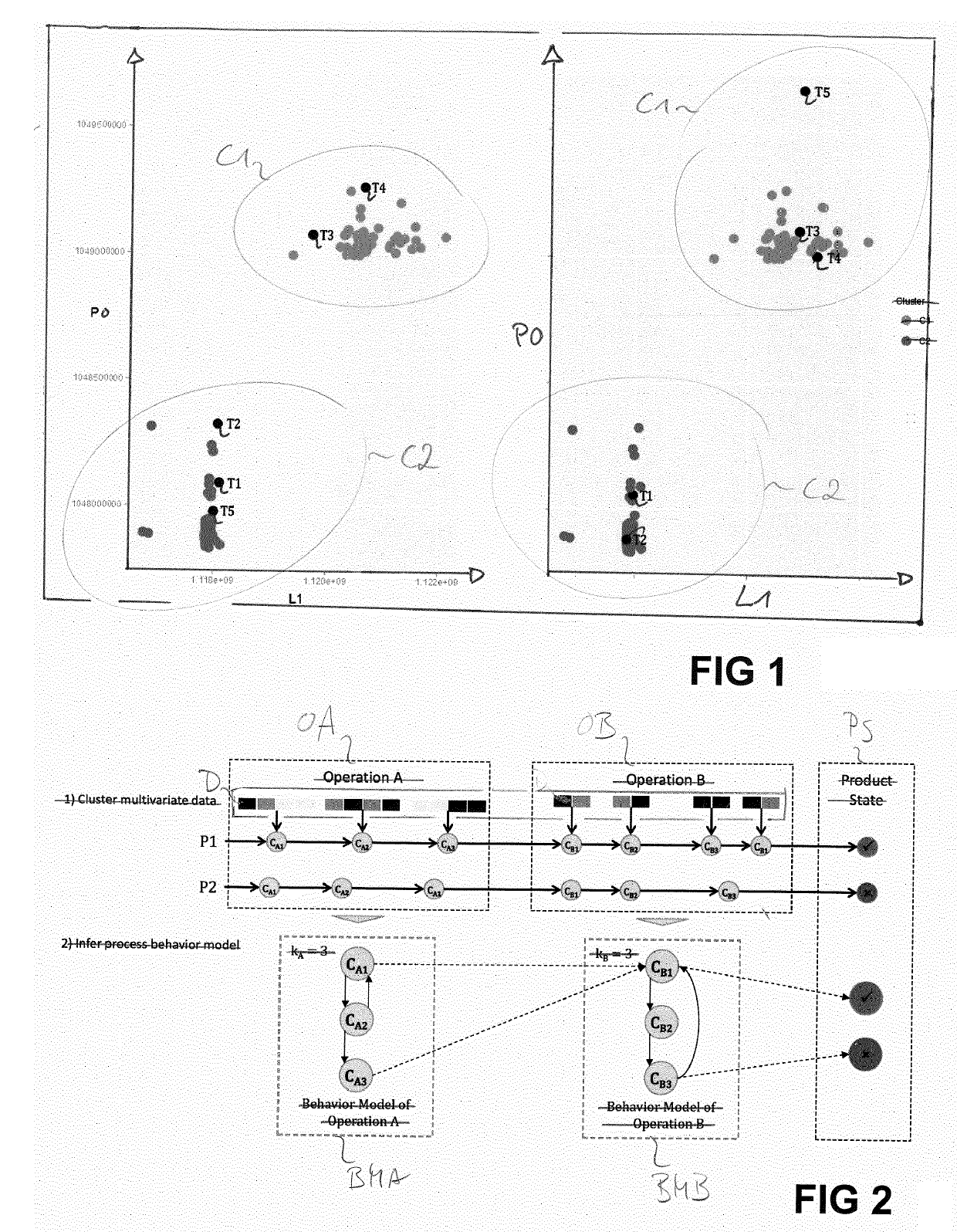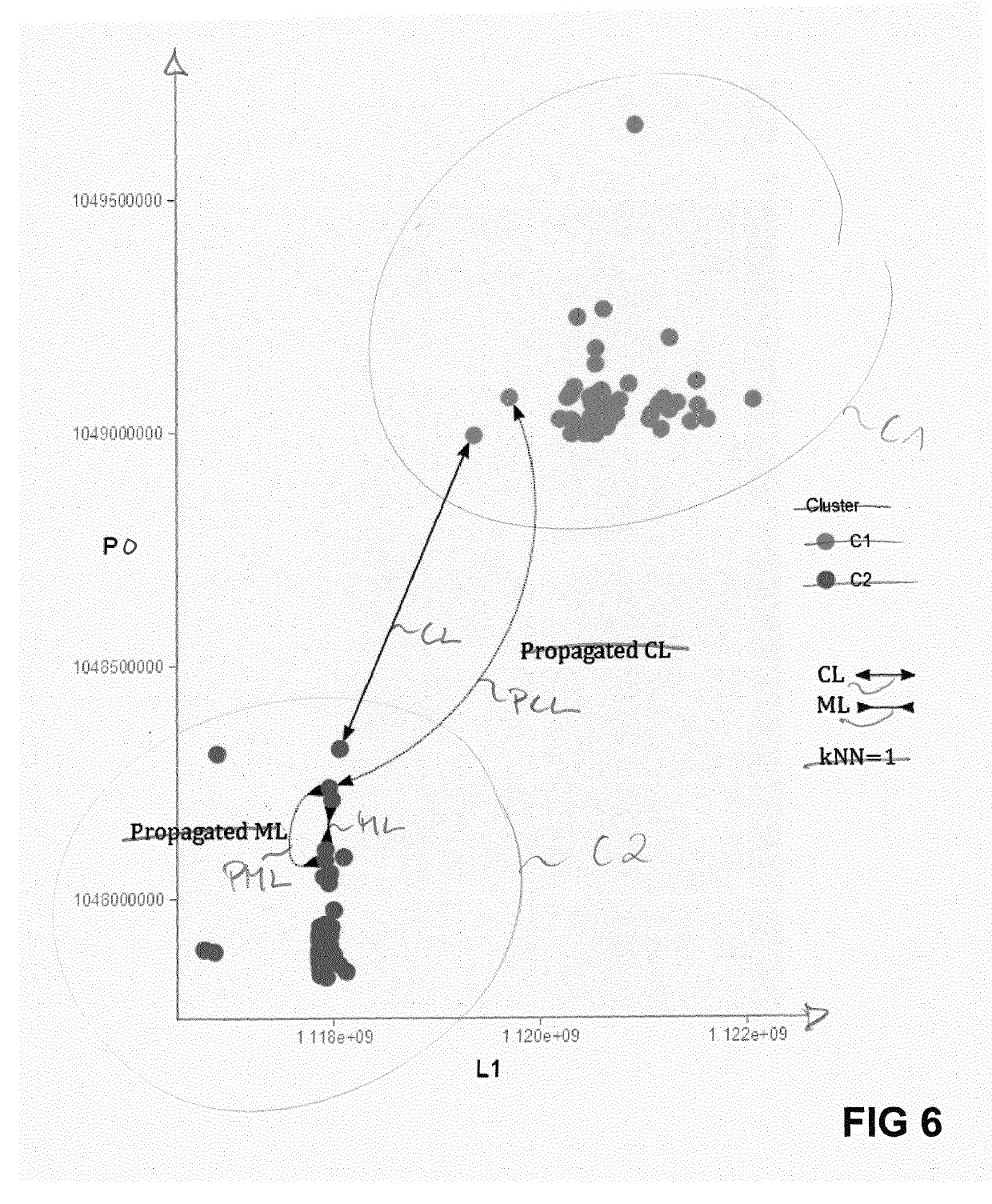Method and system for anomaly detection in a manufacturing system
a manufacturing system and anomaly detection technology, applied in the direction of electrical programme control, program control, instruments, etc., can solve the problems of high static monitoring system and difficult task of anomalous behavior detection in large-scale industrial automation systems (e.g. multi-, plcs) and achieve the effect of improving analysis results
- Summary
- Abstract
- Description
- Claims
- Application Information
AI Technical Summary
Benefits of technology
Problems solved by technology
Method used
Image
Examples
example 1
[0108]The present embodiment considers inputs to programs of industrial controllers in propositional logic, e.g. =LightBarrier ∧¬MotorRunning. The must-link constraint would hold for every time step in which a light barrier was triggered and a motor was not running.
[0109]Function blocks are known from the Function Block Diagram (FBD), a graphical language for programmable logic controller design. A function block describes the function between input variables and output variables. Function Block Diagram is a language for logic or control configuration supported by the standard IEC 61131-3 for a control system such as a Programmable Logic Controller (PLC) or a Distributed Control System (DCS).
[0110]Function blocks can be used as control knowledge to guide the event categorization. In this context, event categorization is simply the execution of the constraint-based clustering, with each cluster yielding a model of a state of the manufacturing system. The system is able to interpret f...
example 2
[0119]In a production system, labeled sequences could be obtained by looking at final product quality, e.g. (Xi, yi=“accept”) (Xi+1,yi+1=“reject”).
[0120]Here, clusters would be penalized for pairs of instances that belong to sequences with different quality labels. This step is not necessary, in case product states are unknown. However, including such knowledge about product states produces a more robust clustering model that can better distinguish between desired and undesired states, since sequences with the label “reject” are more likely to contain undesired states.
[0121]Constraint Propagation
[0122]Depending on the amount of domain knowledge, the transitive closure of constraints might result in a fair amount of constrained pairs. However, it can be helpful to further leverage knowledge about equipment hierarchies in the automation system.
[0123]First of all, an equipment hierarchy allows to separate all variables into equipment-induced subspaces of the original dataset. Formally,...
PUM
 Login to View More
Login to View More Abstract
Description
Claims
Application Information
 Login to View More
Login to View More - R&D
- Intellectual Property
- Life Sciences
- Materials
- Tech Scout
- Unparalleled Data Quality
- Higher Quality Content
- 60% Fewer Hallucinations
Browse by: Latest US Patents, China's latest patents, Technical Efficacy Thesaurus, Application Domain, Technology Topic, Popular Technical Reports.
© 2025 PatSnap. All rights reserved.Legal|Privacy policy|Modern Slavery Act Transparency Statement|Sitemap|About US| Contact US: help@patsnap.com



